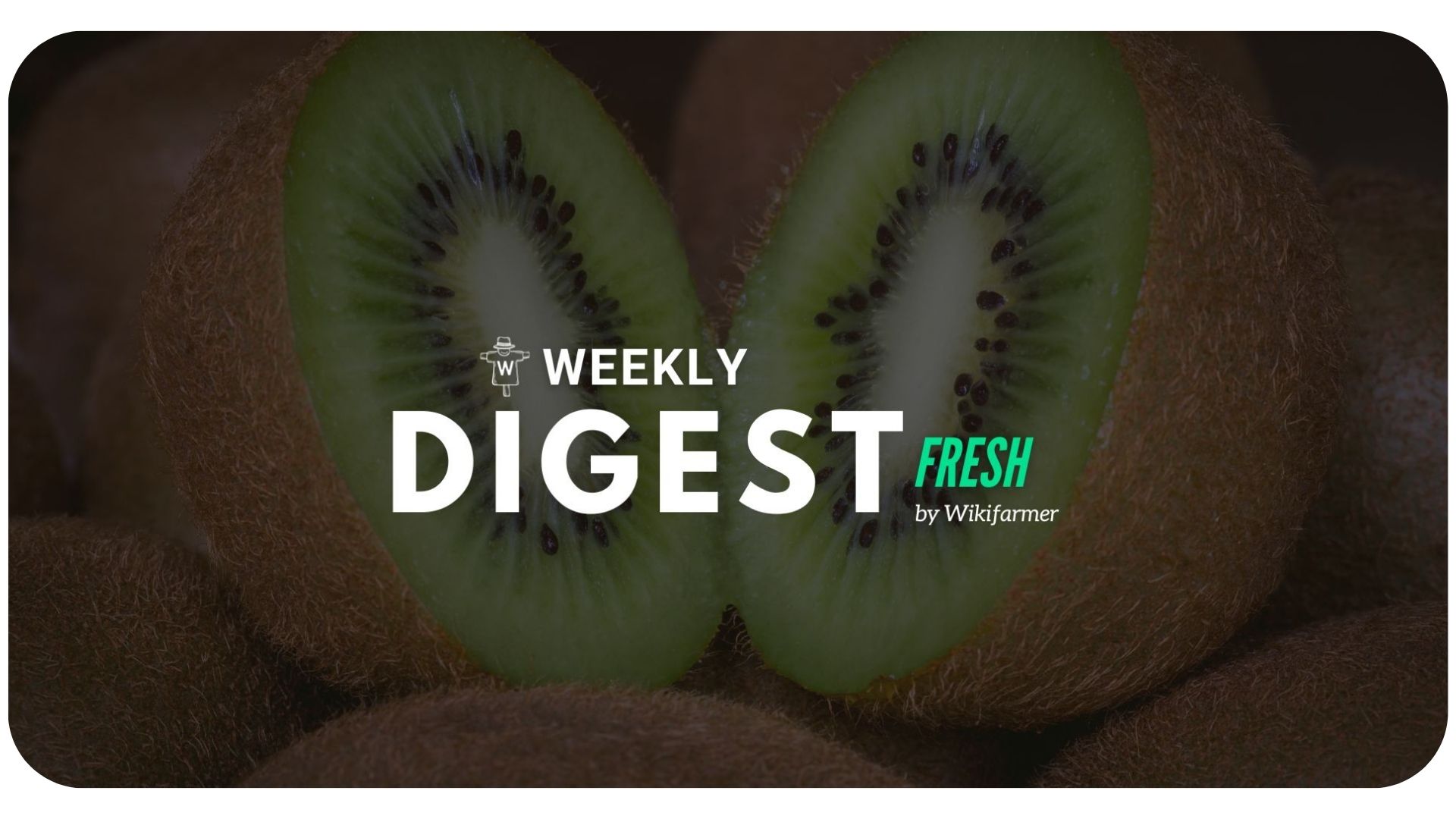Kiwis Market Digest w44/2024

Weekly updates on the Kiwis market
Main Price Movements in the EU
The European kiwi market is experiencing a notable increase in local supplies, which are gradually overshadowing imported kiwis from overseas. As domestic harvests grow, European kiwis become more prominent, with consumers favoring fresh, regional options. This trend supports the overall expansion of the European kiwi market, establishing it as a strong competitor in the winter fruit category as demand rises.

Recent data collected from the Wikifarmer Marketplace, along with insights from the German Federal Ministry of Food and Agriculture and the French Market News Network, indicate that in the German wholesale markets, non-European kiwis are becoming increasingly scarce, resulting in a decline in prices for the remaining stocks. Conversely, supplies from Italy and Greece are expanding, with gold and red varieties enhancing the fruit selection. A similar pattern is observed in the French wholesale market at Rungis, where prices have also experienced a slight decrease; currently, Greek Hayward kiwis are priced at €2.30 per kg.
 As the kiwifruit harvest commences in the Northern Hemisphere, Greek producers anticipate a season where demand is likely to outstrip supply. Both Greece and Italy are expected to see slight increases in production, with Greece projecting an 8% rise and Italy a 6% rise compared to 2023. However, weather conditions have led to smaller fruit sizes, raising concerns about the storage ability and condition of the fruit during transport.
As the kiwifruit harvest commences in the Northern Hemisphere, Greek producers anticipate a season where demand is likely to outstrip supply. Both Greece and Italy are expected to see slight increases in production, with Greece projecting an 8% rise and Italy a 6% rise compared to 2023. However, weather conditions have led to smaller fruit sizes, raising concerns about the storage ability and condition of the fruit during transport.
Due to the ongoing Red Sea crisis, prolonged transit times to distant markets, particularly East Asia, may complicate shipments despite kiwifruit's general resilience during long journeys. Growers remain optimistic about prices, believing that lower average yields per hectare will translate into higher earnings per kilogram.
Kiwi farming innovations: New cold-resistant species discovered
Researchers at Nauni University’s Dr. YS Parmar University have unveiled a wild kiwi species, Actinidia callosa var. strigilosa, capable of thriving at altitudes up to 2,800 meters, significantly surpassing the current cultivation limit of 1,500 meters. This groundbreaking discovery, led by PhD researcher Abhilash Pradhan and confirmed by Dr. Kumar Ambrish, could revolutionize high-altitude farming in India, particularly in the northeastern regions. As climate change increasingly affects kiwi crops in warmer areas due to rising temperatures, this new species offers a promising solution for meeting demand in cold and high-altitude environments. Efforts are underway to preserve its germplasm and develop cold-resistant kiwi varieties, potentially transforming local economies and enhancing the horticulture industry in colder climates.
-jpg.jpeg?width=755&height=218&name=rounded%20blog%20covers%20(24)-jpg.jpeg)
New EU Marketing Standards Impacting Kiwi Exports
The European Commission has revised marketing standards for the fruit and vegetable sector, including kiwifruit, as part of its Farm to Fork Strategy, which aims to improve consumer information and reduce food waste. Key changes include consolidating previous regulations into a single set of rules and mandating the indication of origin for several products, including dried fruits, nuts, and kiwis. Under the new rules, products that do not meet marketing standards can still be sold for processing or animal feed, helping to minimize food waste.
Effective January 1, 2025, kiwi suppliers must ensure that their labels clearly indicate the country of origin and any required classification and variety information. These changes aim to enhance transparency in the supply chain while providing opportunities for exporting countries to adapt to the new regulations.
.png?width=450&height=87&name=New%20Logo%20(1).png)
